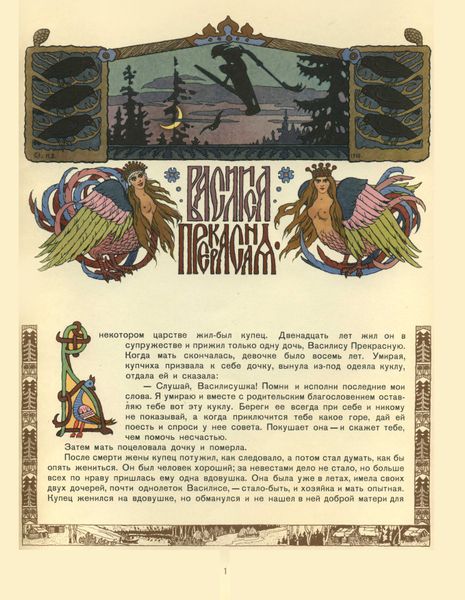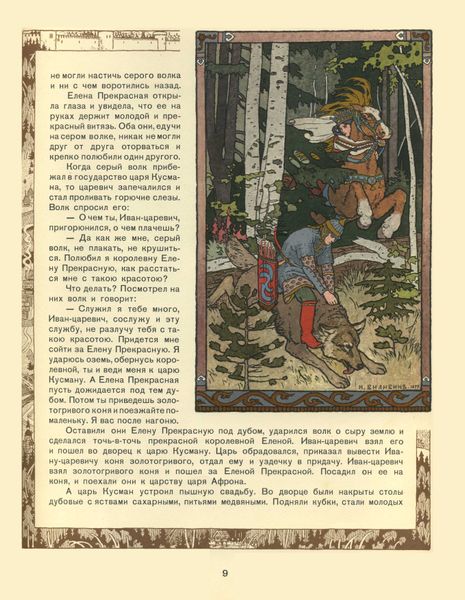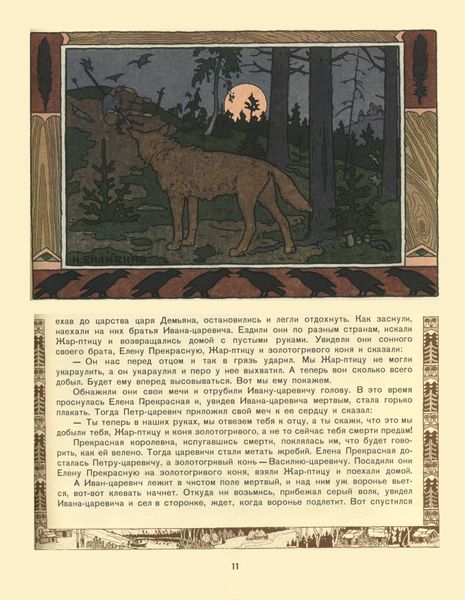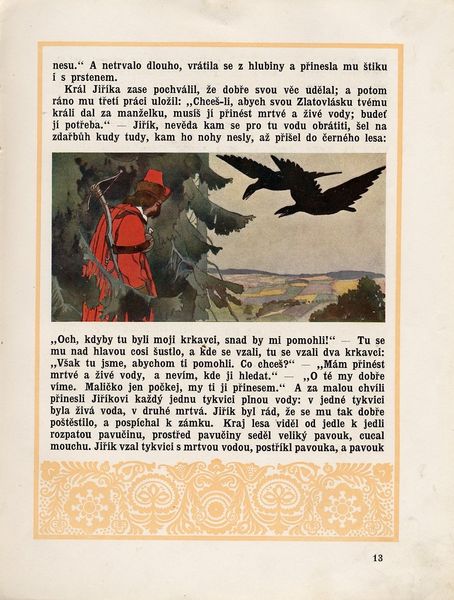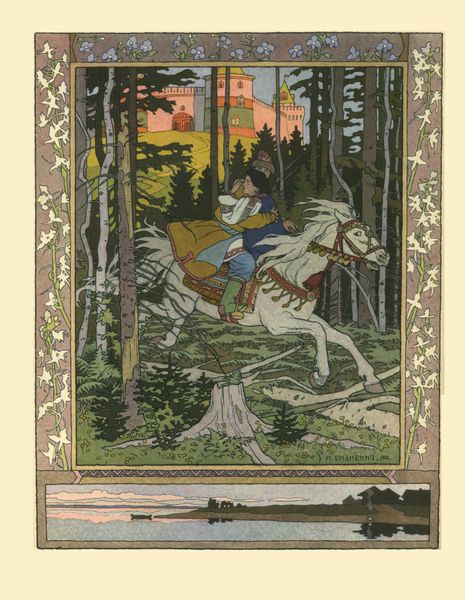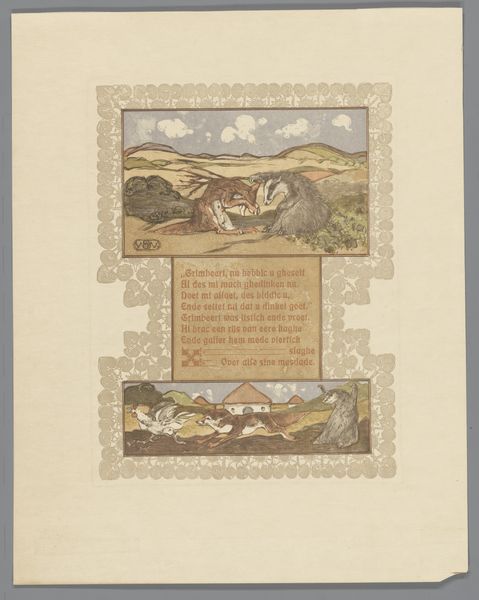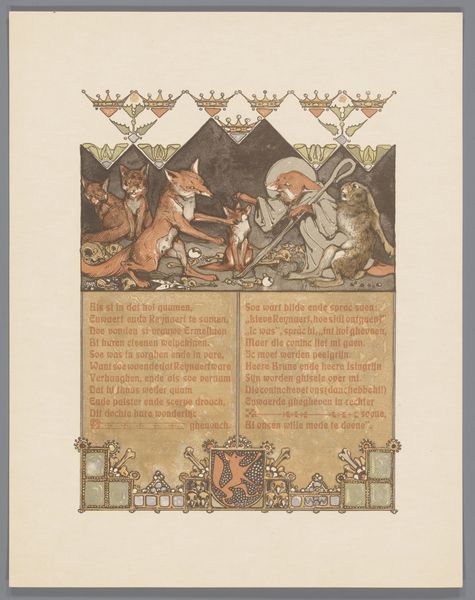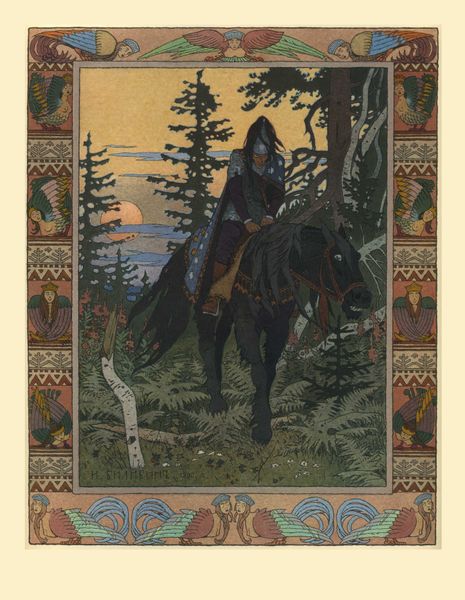
print, ink
#
narrative-art
# print
#
landscape
#
ink
#
folk-art
#
mythology
#
russian-avant-garde
Copyright: Public domain
Curator: Here we have "Illustration for the Russian Fairy Story "Maria Morevna"," a work on paper rendered in ink by Ivan Bilibin around 1900. What's your initial impression? Editor: The colours are quite striking for something over a century old. The figures of the rider and the horse appear like frozen thunder—mid-leap, with a somewhat ominous sky and dense forest. There's a strong feeling of being trapped inside a fable. Curator: Indeed. Bilibin was instrumental in shaping the visual language of Russian fairy tales and the "Russian Style" associated with the Ballets Russes and other national art forms. This piece is tied to the narrative tradition within the broader context of the Russian Avant-Garde. It draws heavily on folk art. Editor: You can really see the roots in folk traditions in the ornamentation—the frame, particularly, echoes woven textiles and wood carvings. But beyond that, what sociopolitical function do you see? I mean, fairy tales are rarely just for children. Curator: It comes from an era of burgeoning national identity. Bilibin's work, disseminated as prints, helped construct a romanticized, distinctly Russian past. The heroic figure and the fantastic elements bolster a narrative of national pride, but also alludes to social hierarchies deeply rooted in Russian society. Editor: Exactly. Even in its celebration of folklore, the art inevitably participates in constructing cultural norms. The active male hero rescuing or fighting-- these stories teach more than they let on. We need to read beyond the surface and examine how gender and power dynamics are depicted. This "heroic" imagery often serves conservative purposes, masking complex social realities. Curator: Perhaps, but consider the artist’s intention: to awaken the popular imagination and solidify cultural identity at a pivotal moment for Russia. Museums in that moment were becoming tools for forging public sentiment. Editor: And yet, this doesn't mean we ignore how the image might affect contemporary audiences! We have the duty to bring art historical rigor and the current politics of imagery together, revealing how images like these continue to inform or misinform how we navigate current sociopolitical conversations around race, class, and gender. Curator: That’s a vital consideration, and one that adds depth to appreciating Bilibin's enduring appeal beyond the purely aesthetic. Editor: Right—context is critical to revealing not just the art's story, but *our* own.
Comments
No comments
Be the first to comment and join the conversation on the ultimate creative platform.
